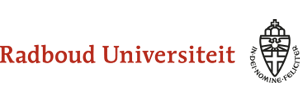American English Phonetics
Another American English Faculty Project
4.4 A transcription system for AN
It would be convenient if we could refer to the phonemes of Dutch by means of a similar set of symbols as were introduced for GA in the first chapter. The reason is that we need to be able to refer to these phonemes when comparisons are made between them and the phonemes of GA. Although not all the phonemes of Dutch are actually used in the English spoken by Dutch learners, we will, for the sake of completeness, give the full set. This will also enable you to transcribe Dutch. It is generally very illuminating to transcribe your own language, simply because it will make you more aware of what you are actually doing when you speak it. Be careful, however, not to confuse the Dutch symbols with the GA symbols. You will find that in many cases the symbols used for the phonemes of Dutch are actually the same as those used for the phonemes of GA. It would be a very sad thing indeed if you concluded from this that the Dutch phoneme is pronounced the same as the GA phoneme for which the same symbol is used. In general, not a single phoneme of one language is pronounced in the same way as a phoneme of any other language. (Think of the different allophones!) The reason why the same symbol is often used is that it is awkward to go on devising and using more and more complex or exotic symbols to represent all those different phonemes. (All the symbols used here conform to the principles of the International Phonetic Association (IPA). One of the Association’s aims is to provide a set of symbols that can be used in the transcription of languages. These symbols can be used to represent phonetically different, though reasonably similar sounds. Since it is not possible anyway to express the precise quality and duration of a sound in a symbol, it is only convenient to employ the same symbol for similar sounds in different languages.) The accent of Dutch that is represented here is the Standard accent, as used for instance by radio and TV newsreaders. It is originally a western Dutch variety. It is here referred to as Algemeen Nederlands, or AN for short.
One major division we need to make in the case of the phonemes of AN is that between basic phonemes and marginal phonemes. Marginal phonemes typically occur in what native speakers regard as loanwords. An example of a marginal V-phoneme is /iː/, as in expertise, that of a marginal C-phoneme /ɡ/ occurring in, for instance, goelasj.
